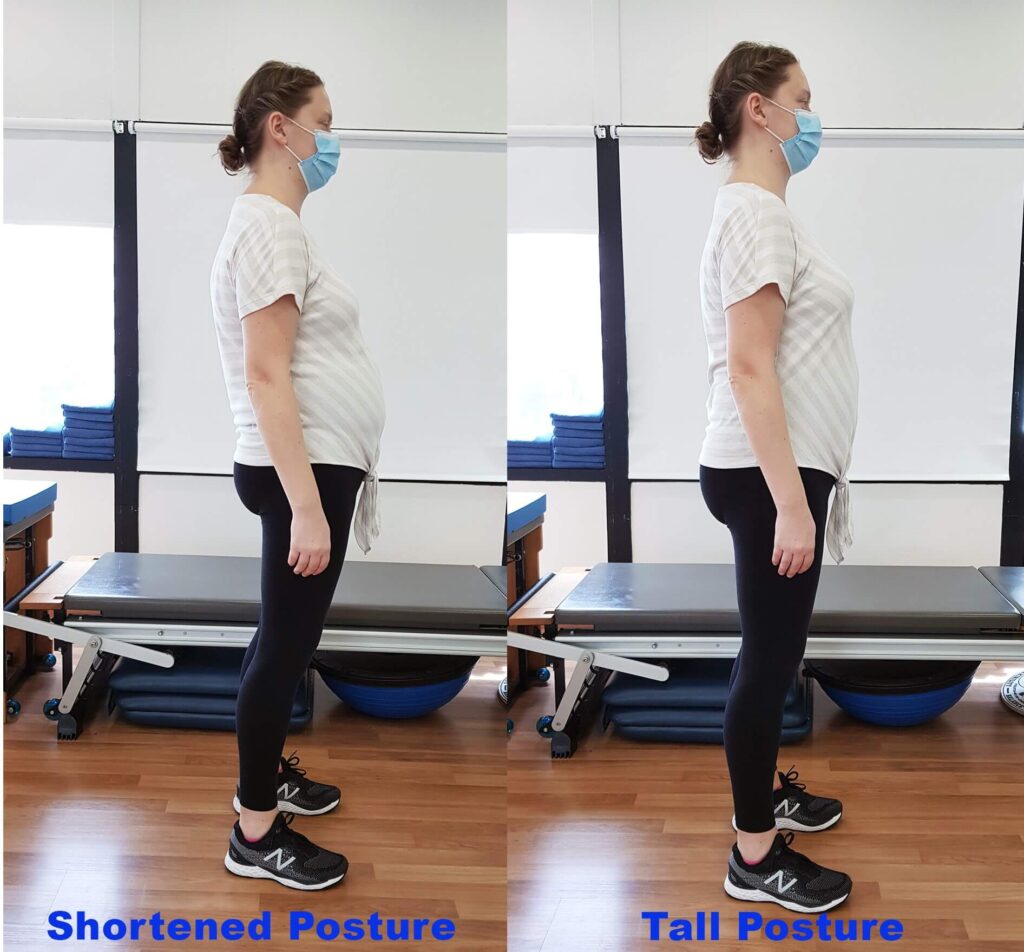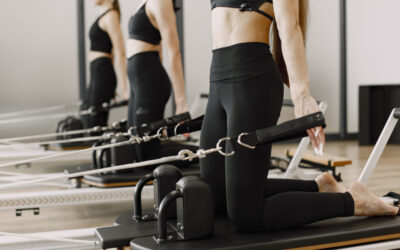How Improving Your Posture Can Relieve Pregnancy-related Back Pain

How pregnancy affects your posture and back
The journey towards being a Mum begins with conception and ends being presented with a beautiful new-born baby, but the pregnancy journey poses various challenges for the Mum to be.
As the baby grows, the weight gain associated with this causes adjustments in posture. Pregnant women tend to lean slightly backwards to compensate for the extra kilos carried at the front and the pelvis easily tips forward, creating more of an arched position of the lower back. The larger the baby gets, the harder it is to prevent, and this posture can place extra pressure on the back and cause pain.
Learn how to help prevent back pain by doing one simple exercise along the way.
The pelvis is a bit like a bucket with the baby growing inside it. As the uterus has attachments to the front of the spine, the increase in weight tends to tip the bucket forward, causing an increase in the arch of the lower back. The muscles at the front of the hips get used to being in a shortened position and can become quite tight, making it even easier to over-arch the back. The tummy muscles, in the non-pregnant state, are usually always working a little bit to keep our tummies in and support our trunk. They have a much harder job doing this during pregnancy – especially in the last few months.
If we can maintain ‘muscle memory’ during pregnancy and prevent the muscles at the front of the hips from becoming too tight, there is less chance of getting posture-related pain during pregnancy.
One simple exercise you can do, anytime, anyplace, anywhere …. WALK TALL!
As the low back arches during pregnancy, this has a knock-on effect to the whole of the spine. The normal elongated ‘S’ shape of the spine becomes less elongated and curvier. The arches of the foot can also tend to flatten and the knees can be too straight. The result is that we lose height and become slightly shorter in stature. It becomes extremely easy to stand in a shortened posture.

So, I challenge all the pregnant ladies out there to channel the model inside of you and walk tall!
Feel the length from the crown of the head upwards. Elongate the curves to lengthen the whole spine. This will gently engage your abdominal muscles to soften the arch of the lower back. Imagine you are giving your growing baby a gentle hug. It may help to think of softly tipping the ‘pelvic bucket’ backwards. This will in turn wake up the arches of the feet to create a lift. Your shoulder blades should slide softly away from the ears to lengthen the neck. Try to maintain this position as you breathe normally. You should not be holding your breath.
Practice makes perfect
Practice this initially in the standing position. It may help to stand in front of a full-length mirror; you should visibly see how you can stand taller compared to the initial relaxed/shortened position. Once you have mastered standing in the tall posture, try to maintain it as you walk.
The more often you remind yourself to walk tall and stand tall, the less the muscles will forget and the more ‘automatic’ it will become. A more upright position reduces the tension in the low back, supports your spine and your baby.
If you have persistent back pain, consider seeing your physiotherapist sooner rather than later as they can help diagnose the underlying issue and prescribe treatments to help relieve the pain.
Written by: Rowena Chance, MCSP (Chartered Physiotherapist UK)
Rowena is a highly experienced Physiotherapist and Clinical Pilates Instructor with over 36 years of experience working in large hospitals, private practice and even ‘on the field’ at the Hong Kong Sevens Rugby tournament. While she has a strong background in sports physiotherapy, her clinical interests includes women’s health particularly ante- and post- natal problems and pelvic disorders often presenting as hip or back pain.

